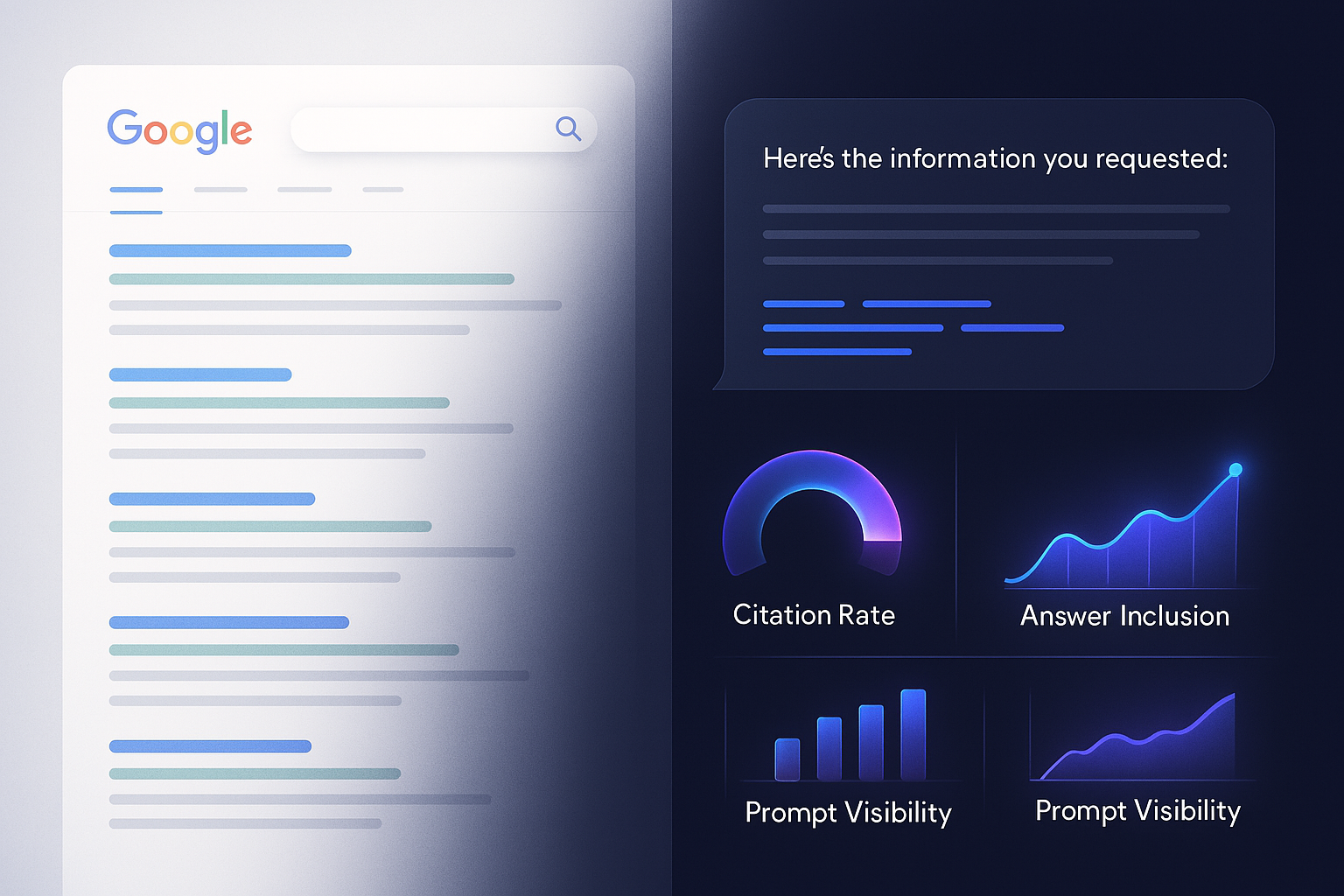The Death of Traditional SEO: Navigating the AI-First Content Revolution

Howard Ekundayo
March 17, 2025

The search landscape is undergoing its most profound transformation since the advent of mobile. While traditional SEO has focused on optimizing for search engine results pages (SERPs) through keywords and backlinks, we're witnessing the emergence of an entirely new paradigm: Answer Engine Optimization (AEO). This shift isn't merely an evolution of existing practices—it represents a fundamental reimagining of how content is discovered, consumed, and monetized in an AI-first world.
The most striking trend emerging from market patterns is what we might call "the great disintermediation." AI interfaces are rapidly becoming the primary consumption point for information, rather than merely a gateway to other destinations. The traditional user journey of "search → review results → click → consume" is collapsing into a single interaction within AI interfaces themselves. Companies that fail to adapt their content strategies for this new reality face existential risk as traffic patterns fundamentally change. We're already seeing indications that substantial percentages of queries that would traditionally drive traffic to third-party sites are being satisfied directly within AI interfaces, creating both unprecedented challenges and opportunities.
"The winners in the AI search era won't be those who optimize for algorithms, but those who create content so valuable and structured that AI systems can't help but cite them as authoritative sources."
From Keywords to Knowledge: The New Content Imperative
What makes content successful in this new paradigm differs dramatically from traditional SEO best practices. While keyword density and backlink profiles once reigned supreme, AI systems appear to prioritize content demonstrating genuine expertise, factual precision, and practical utility. The format, structure, and presentation of information directly impacts its likelihood of being used in AI-generated responses. This suggests organizations should focus on developing content that serves as primary sources (original research, unique data) rather than secondary aggregation, with sophisticated structured data markup (JSON-LD, Schema.org) to increase citation probability. The winners in this environment will likely be those creating truly authoritative content optimized for machine readability without sacrificing human value.
Technical Infrastructure for the AI-First Era
Technical infrastructure represents another critical consideration. Simply creating valuable content isn't sufficient—it must be structured specifically for AI consumption. This likely requires implementing comprehensive structured data, developing dedicated AI-focused content APIs, and establishing content verification systems to maintain factual integrity. Companies should begin tracking new metrics like "citation rate" (how often content is referenced in AI responses), "answer inclusion percentage" (what proportion of content makes it into AI-generated answers), and "prompt visibility" (how frequently brands appear in auto-suggested prompts). These measurements will increasingly supplant traditional traffic metrics as predictors of content performance.
Strategic Positioning in a Fragmented AI Landscape
Perhaps most importantly, the AI search monopoly is fracturing. While Google wrestles with the fundamental business model conflict between providing direct answers and preserving ad impressions, a diverse ecosystem of specialized AI interfaces is emerging. Each platform has different content ingestion, attribution, and presentation mechanisms requiring tailored approaches. Organizations that develop platform-specific content strategies while building infrastructure for cross-platform distribution will likely dominate this fragmented landscape. The coming 12-24 months will be critical as we transition from traditional search paradigms to an AI-first content discovery environment where value accrues to those who can establish authoritative positions within AI knowledge systems.
Learn more about this article
The AI assistant uses the content of this article to provide relevant answers. Information may not be 100% accurate.
Powered by claude-sonnet-4-5-20250929